Duckweed in an aquarium: description, benefits and harms

Any aquarium with beautiful and exotic fish implies the presence of plants in it. They create shade and are an additional food supplement for the inhabitants of an artificial reservoir. One of the most popular aquarium "flowers" is duckweed. It not only acts as a decorative decoration, but also brings many benefits.

Peculiarities
Duckweed belongs to the genus of flowering monocotyledonous plants of the aroid family. In nature, it is found on the surface of the water surface of deep lakes and swamps. The growth of duckweed is very rapid, and it literally covers the water surface with a dense green “blanket” in just a few days. This picture is simply amazing. She is able to add a special charm to any open area.
The external features of the plant are as follows: small leaves that form an original weaving, and the root system reaches up to 10 mm in length. Due to this the plant has good resistance. The period of its flowering starts in May and ends in late October.
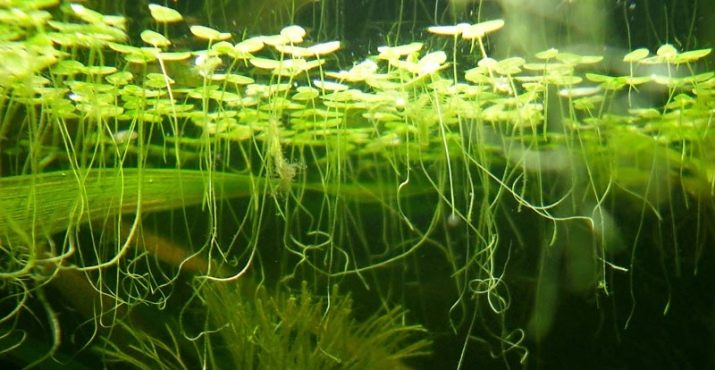
Varieties
Aquarium duckweed is divided into several types.
Small
The most common variety that is relevant for a miniature aquarium. Leaves of the duckweed grow up to 3-4 mm in length. They have a graceful oval shape and a light green hue that can turn yellow over time.
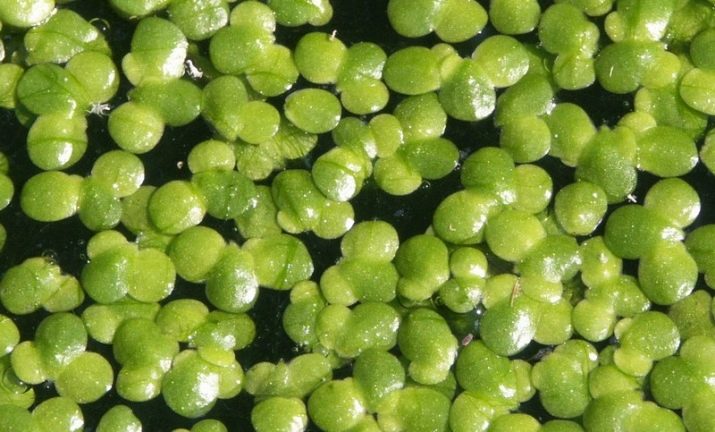
Multi-root
It can be described as a "bush" with tufts of roots extending from each leaf. This species is known for its amazing color: the top of the leaves is green, and below they have a rich lilac tone.
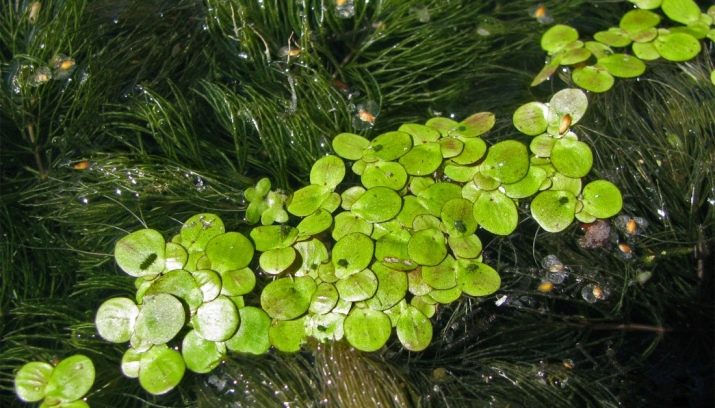
Humpbacked
The variety is known for its rapid growth. It has round convex glossy leaves.
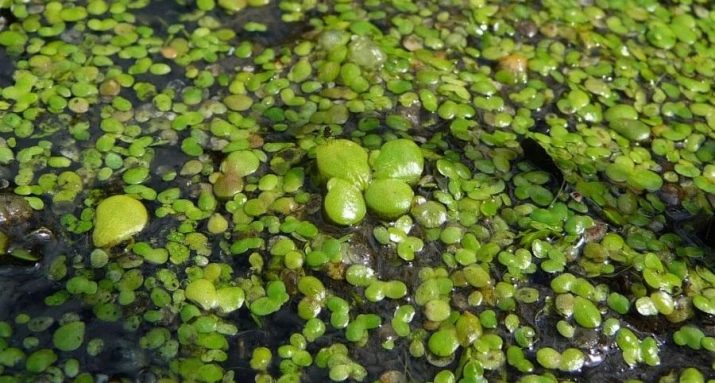
Tripartite
The plant spends most of the time at the bottom, rising to the surface only during the flowering period. Unlike other species three-lobed duckweed has large dense leaves (1-1.5 cm).

Note that this floating flower is used not only for decorative purposes, but also for the treatment of various diseases. For example, decoctions and infusions based on duckweed help people suffering from respiratory diseases.
Advantages and disadvantages
Many aquarists, when choosing plants for an artificial reservoir, first look for this or that information. Duckweed is known for its many benefits.
- The plant is unpretentious. The floating flower lives well in "difficult" conditions and "cramped" bodies of water.
- In the aquarium, it saturates the water with oxygen. This factor is one of the most important for the life of fish.
- The floating flower creates shade and serves as a shelter for the inhabitants of the artificial reservoir. Many species of the inhabitants of the depths build nests in the duckweed leaves.
- Acts as a filter, removing nitrates and impurities from water.
- It is an excellent food supplement for fish. Duckweed contains a large amount of vitamins and minerals.

Experts recommend planting this plant in aquariums for South American and African cichlids.
In addition, it is useful for viviparous fish and some labyrinths. Many inhabitants of the depths need a floating flower as a building material: fish build nests and create shelter for fry.
Note that This plant also feeds on lizards, newts, frogs and ducklings.
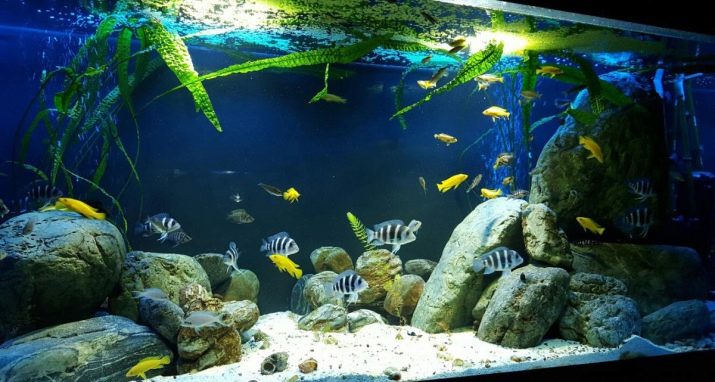
Maintenance and breeding
The floating flower is rather unpretentious. It requires a minimum amount of lighting to grow. Moreover, it can be artificial or natural. Also duckweed does not need additional feeding. Also, for growing a plant no filtration or aeration required. The water temperature is sufficient to maintain in the range of 15-30 degrees.
The optimal option for the growth of duckweed is considered to be parameters from 20 to 23 degrees. By the way, some aquarists breed an amazing floating flower in a separate container, using it as a food supplement for fish.
An important nuance: duckweed is quite susceptible to chlorinated water. With a minimum content of the substance, the growth of the plant stops, and in large quantities chlorine can destroy it.
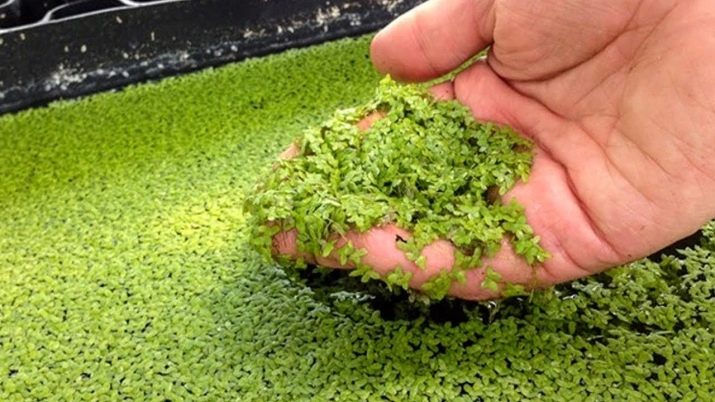
A floating flower is capable of rapid reproduction with the help of daughter shoots that are located at the tips of the leaves: they separate and turn into a separate plant. It can be described as an “island” floating on the surface of the water surface.
It is important to know that duckweed will easily fill the entire surface of an artificial reservoir in a short period of time.
Note that a floating flower can appear in the aquarium without the knowledge of the aquarist. The fact is that the plant enters an artificial reservoir along with fish food. If the owner of the aquarium brings wild duckweed into the house, then the plant needs a two-week quarantine... This will help keep the fish free from pathogenic bacteria and infections.
With abundant growth of marsh duckweed in the aquarium, the risk of harm to its inhabitants increases. Under the dense green "blanket" other plants will die, and the fish will begin to experience a lack of light. This situation will lead to a deterioration in their health and death.
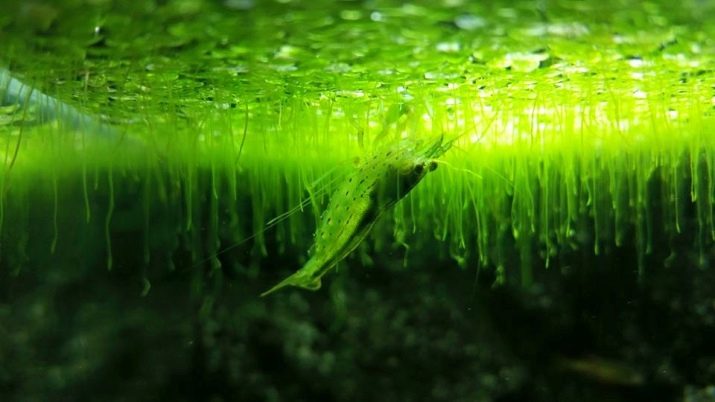
Duckweed growth control
The excess floating flower is carefully trimmed and fished out of the water using a net.
Experienced experts advise keeping plant growth under control using fishing line.
To do this, a strong "thread" is attached with suction cups, which should be at the same level with the water. Thus, the floating flower will not be able to grow outside the designated area.

Goldfish are excellent "destroyers" of duckweed. They are able to eat all the shoots of the plant.When removing duckweed from the aquarium, it is necessary to place the floating flower in a hotel container. Thus, it will be possible to preserve the life of young fish and shrimps, which often hide in the thickets of duckweed. Also, the leaves can be dried and added to food for the inhabitants of an artificial reservoir.
Duckweed is often combined with other aquatic ground plants, the leaves of which are on the surface of the water. In addition, it goes well with home flowers, reminiscent of thickets of reeds or water irises.
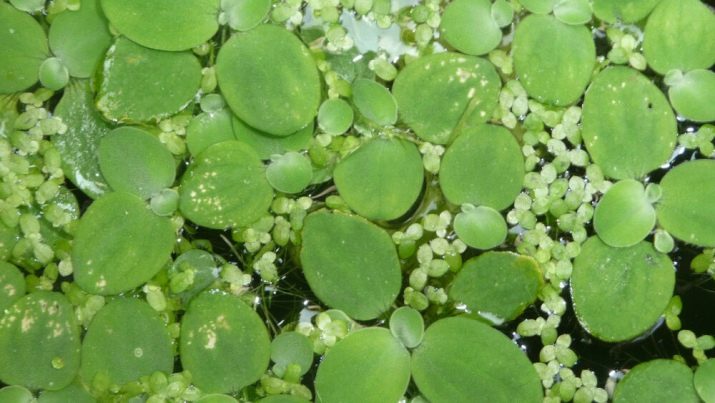
Even more useful and interesting information about the benefits and dangers of duckweed can be found in the following video.








